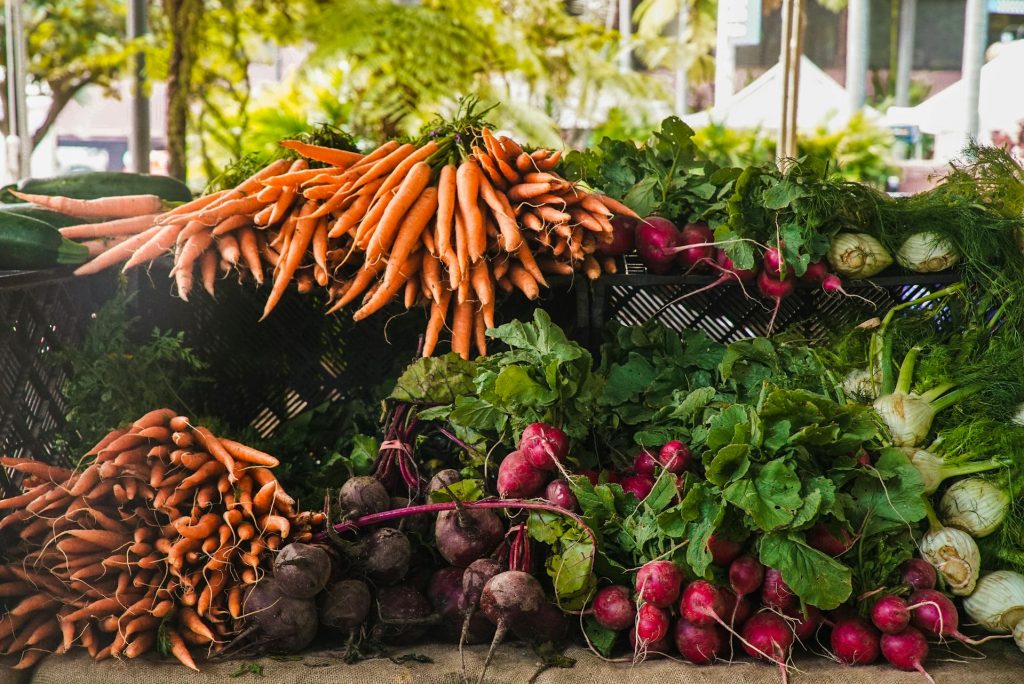
City Food: Resilience, Community Sustainability and Public Markets in Toronto
Background
Traditional, and largely public, markets have long served as primary means of food distribution in cities around the world. While they vary in how they operate and are governed, research demonstrates that public neighbourhood markets contribute to community sustainability in ways that private food infrastructure, like conventional grocery stores, does not.
Evidence from cities around the world also demonstrates that public markets have historically played important roles in social reproduction and, more recently, have supported low-income neighbourhoods by providing affordable, culturally appropriate food; served as incubators for business start-ups; and contributed to social inclusion and cohesion in marginalized and increasingly diverse urban areas. While public markets have long been experiencing a resurgence in many cities in Africa, South America, Europe and Asia, this has not been as true in North America. Despite evidence demonstrating significant contributions to community sustainability, public markets here continue to suffer from inadequate public investment and privatization.
Toronto is no exception. The origins of the city revolve around what was known as ‘the Market Block’, an area surrounding St. Lawrence Market, Toronto’s first public market. Over the years, public markets were subject to changes in governance, and a decline in public responsibility for the support of food distribution, leading to public sector cuts which not only relegated public markets to a minor role in food distribution but active disinvestment in, and dismantlement of, markets. This was accomplished in part through campaigns by the Toronto Retail Grocers Association and the active integration of members of the association into municipal political decision-making bodies.
While public markets were historically seen by residents as an inexpensive alternative to grocers, current public investment in markets is often aimed at high income residents and tourists and concentrated in the urban core of cities rather than marginalized areas. The redevelopment of Toronto’s St. Lawrence market is a prime example of these trends that largely ignore the ability of public markets to address food provisioning vulnerabilities in less privileged parts of the city. In other global cities there are notable exceptions to these trends. London’s (U.K.) strategy for urban market renewal is specifically tailored to address differences in food affordability and accessibility across the city. Barcelona has 47 neighbourhoods and 43 public markets with policies designed to ensure that residents live within a 10-minute walk of fresh food.
While there are examples of the durability of public markets in other regions of the world, as well as models of market renewal, there is little understanding of the processes through which market infrastructure was dismantled in Toronto, the shift in ideologies of governance that facilitated the use of food as a means of capital accumulation by private actors, or the possibilities of reinvestment in public market infrastructure as a way to enhance food security and diversity across the city.
The gap in understanding the importance of diverse forms of food provisioning in urban areas in general, and Toronto specifically, is magnified during times of crisis when the vulnerabilities of heavily privatised food supply chains are exposed. This has been highlighted during the ongoing experience with COVID19; as the pandemic made clear the vulnerabilities created through long supply chains and the treatment of public markets, including farmers markets and flea markets as ‘alternative’ and non-essential. Rather than help people cope, this exacerbated the vulnerability of already-marginalized populations in parts of Toronto.
Research
In this research project we combine historical research on municipal and private food provisioning in Toronto with an exploration of how neighbourhood public markets contribute to community sustainability and how they can be better integrated into the urban food infrastructure of Toronto and serve as effective modes of community development, just as libraries and community centres do. Specifically, we are investigating the relationships between public markets and the enhancement of:
- Social vitality – as spaces where diverse publics meet and develop relations that foster social inclusion and cohesion and reproduce the public sphere; something that is increasingly important as the availability of, and access to, public sites is increasingly reduced in cities;
- Economic viability – as spaces that provide affordable food, products and services as well as incubators for business start-ups by local residents from diverse communities;
- Political validity – as sites where individuals and community groups meet, organize, govern and enhance food securities in their own neighbourhoods; creating a capacity for self-determination in neighbourhoods that often face interdictory obstacles in accessing and being represented in larger arenas of municipal politics; and
- Ecological Health – as sites that bring consumers closer to producers, reducing transit times, carbon emissions, and providing greater access to healthy food grown in accordance with sustainable modes of production.
The research has four main stages:
- Analysis of international research on the diversity of forms and function of public markets as well as their relative durability over time. Much of this work is complete and has involved compiling and analyzing academic, community, industry, media and policy literature.
- A historical inventory of market infrastructure, organization and governance in Toronto.
- Interviews and workshops with policy makers, market operators and managers, market vendors, market users, community groups and food security/sustainability NGOs, to assess the utility of markets in diverse areas of the city, the value that public markets provide, preferred modes of organization, operation and governance, and how these may be enhanced
- The circulation of findings through academic and online publications, events and feedback sessions for study participants and policy-makers.
